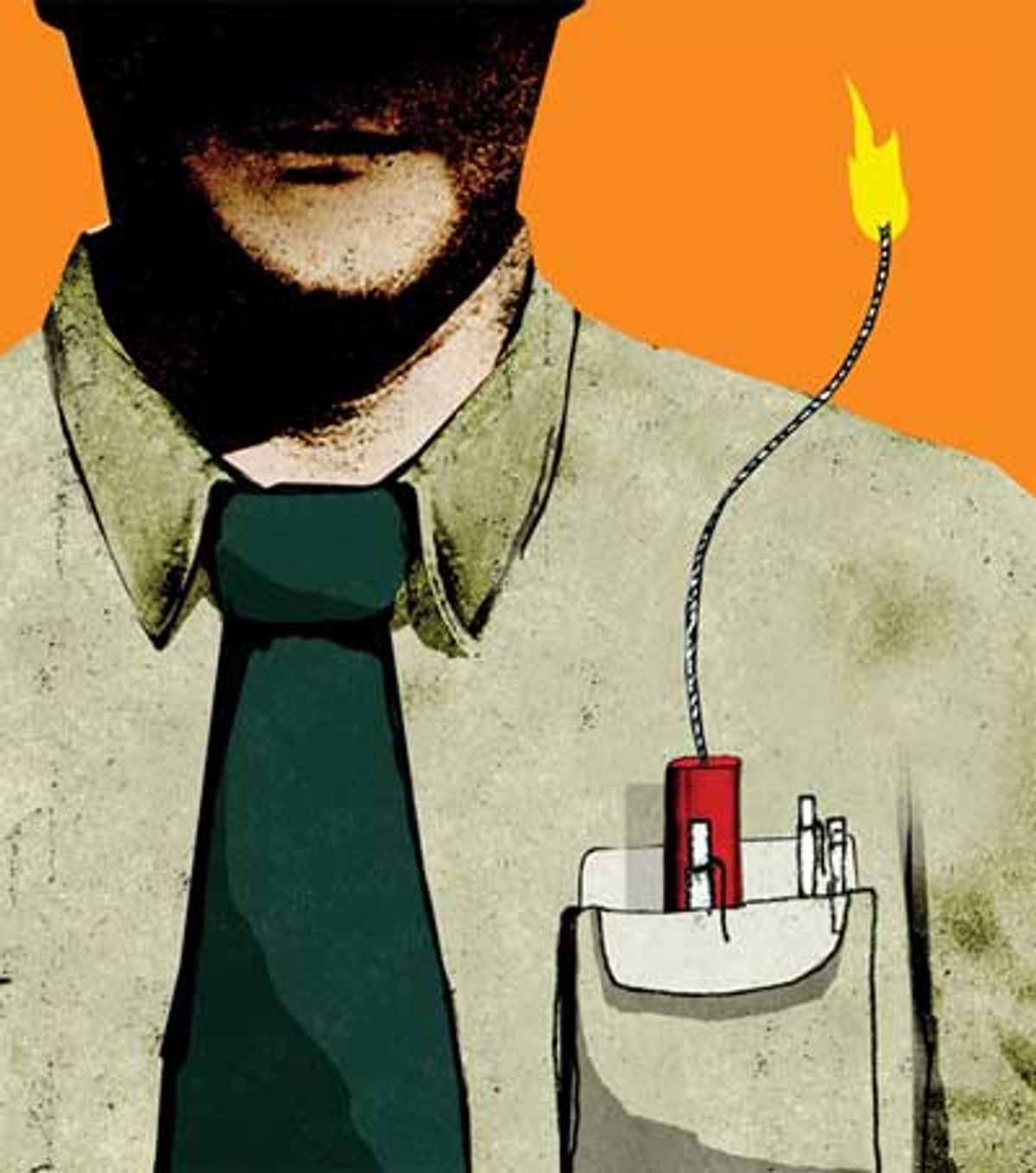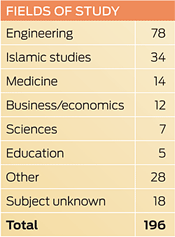It’s not the oddest question to come up at a dinner party, especially at the University of Oxford. But when it comes up between a Middle East expert and a sociologist, idle talk yields to a quest for data. That’s how political scientist Steffen Hertog and sociology professor Diego Gambetta soon found themselves poring through records of 404 people from 30 countries engaged in political violence between 2005 and 2007. Their answer? Engineering.
Of the 178 whose academic focus could be ascertained, 44 percent of those were engineers—most of them in electrical engineering, civil engineering, and computer studies. The next-largest group, Islamic studies, had fewer than half as many, at 19 percent [see table below, "Fields of Study"].
The authors acknowledge that the data underrepresent groups in South Asia, Southeast Asia, North Africa, and Iraq. They claim, though, that the sample population is ”disparate enough—there are individuals from 30 nationalities, nine larger groups, and no fewer than a dozen smaller groups—to allow us to establish whether the puzzle holds true.”
The findings garnered worldwide attention when they were published online last fall in a 90-page working paper. A catchy title didn’t hurt: ”Engineers of Jihad.”
Hertog, now a lecturer in political economy at the University of Durham, in England, says that though he and Gambetta expected the paper to get noticed, they were surprised by accusations of ”ethnic profiling.”
”After all, the anecdote that engineers were overrepresented in radical Islamic movements in the Middle East has been around for decades,” Hertog says. ”But there was never a systematic study about how many were involved in political violence or radical Islam.”
Curiously, the two have not heard from Islamists themselves. ”Frankly, we hope we don’t, after what the engineers said,” Hertog adds. ”Some of them were generally curious. But most had knee-jerk reactions. Look, we did not say engineers have a terrorist mind-set—please write that. We said that engineers tend to be politically to the right and more conservative than other graduates. You can therefore infer that their radical fringe is closer to those of religious groups.”
Hertog and Gambetta believe that a combination of social conditions and an engineering mind-set make engineers susceptible to radicalization.
The paper cites evidence that engineering graduates are much more religious and politically conservative than those pursuing other courses of study. ”People gravitating toward engineering already have those views,” says Hertog. ”Engineering seems to attract a larger share of people drawn to rule-bound systems, compared with other scientists who primarily work on open-ended questions and might be more skeptical.”
The paper suggests that the trend is also driven by professional disenfranchisement. ”The effect of the lack of opportunities was intensified by the corrupt, state-driven job allocation,” the researchers wrote. In other words, Hertog says, after having earned an elite degree you’re frustrated having to drive a taxi or sell vegetables, just because you lack powerful friends.
Hertog and Gambetta are planning to expand their findings into a book covering the topic in far more detail, with more anecdotes, background information, and data from 600 case files recently found by American forces in a jihadist hideout in Iraq. It will include additional survey data on political and religious attitudes of engineers in developing countries and the Muslim world and locate their findings more broadly in theories of political violence, radical behavior, and cognitive psychology studies on how personality traits relate to political attitudes. It will then link those findings to studies of how small radical groups form and consider why certain individuals are more likely to be involved.
”Looking back, we never should have put the paper on the Web,” says Hertog. ”It put us on the map, but not in the way we wanted to be.”




